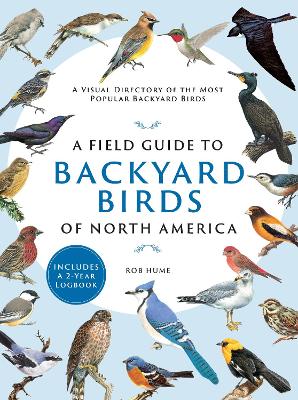Reviewed by annieb123 on
A Field Guide to Backyard Birds of North America is a well illustrated field guide for a wide range of wild birds in North America written by Rob Hume. Due out 28th June 2022 from Quarto on their Chartwell imprint, it's 208 pages and will be available in flexibound format.
Roughly 1/3 of the book is introductory ornithological info about general bird biology and behavior. The information is layman accessible and easy to understand as well as factually accurate. The next chapter includes a collection of specific profiles for common birds which readers would be likely to see in their own backyards. The listing of birds includes 52 entries for birds which readers might expect to find in much of North America, including urban areas, parks, and suburban environments and parklands. There are no photos, but the drawn color illustrations are clear and distinct and easily recognizable.
Half the page content is identical pages provided in a log format for readers to make entries and keep track of sightings. Each of the two page spreads includes a small highlighted text box with bird tracking tips and advice for maximizing enjoyment and understanding.
The book also includes a basic glossary, and index, but no bibliography or links for further reading.
Three and a half stars. It could be a good resource for beginning bird watchers, family activity, or possibly for scouting/activity groups, school library and the like.
Disclosure: I received an ARC at no cost from the author/publisher for review purposes.
Reading updates
- 7 October, 2023: Started reading
- 7 October, 2023: Finished reading
- 26 June, 2022: Reviewed
- Started reading
- Finished reading
- 26 June, 2022: Reviewed
